Systems of Equations
Solving simultaneous equations can be done quite easily by elimination.
However, they can also be solved by using matrices.
Example
ax +by = e
cx + dy = f
can be represented by
Ax=b
Where

so ( using parenthesis now)
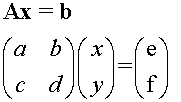
This can be further shortened to
the
augmented matrix form
by combining A and b

Which then allows Elementary Row Operations to be used,
to reduce the equations to upper triangular form.

or to continue and solve

Reforming the matrix then gives
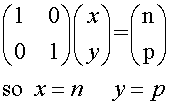
Elementary Row Operations
- The order of equations can be switched.
- An equation can be multiplied by a constant.
- Equations can be added or subtracted.
Example
2x +3y = 7
3x + 4y = 6
can be represented by

Augmented form


Gaussian elimination
The system of equations

can be written in the form
Ax=b

or in augmented form

The process of reducing a system of equations
to upper triangular form, then back substituting to solve,
is called Gaussian elimination.
A redundant row indicates the lack of a unique solution,
a general solution exists.
An inconsistent row indicates that no solution exists.
Small changes in the coefficients leading to large changes
in the solution indicate an ill-conditioned system.
Example
Solve the system of equations
x +2y +z = 14
3x - y - 4z = 7
-x + y +3z = 2
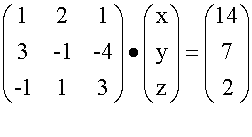
In augmented form
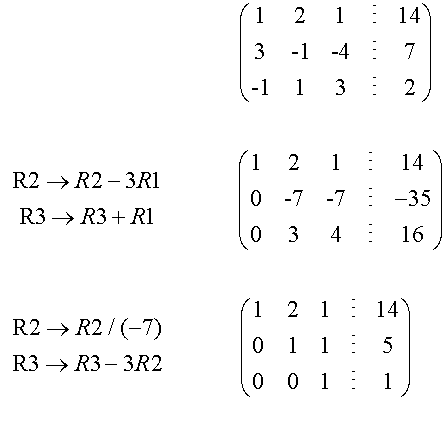
At this stage, back filling can take place.
Row 3 gives z =1
Row 2 is y + z = 5 , so y +1 = 5, i.e. y = 4
Row 1 gives x +2y +z = 14,
so x + 2x4 + 1 = 14 giving x = 5
Alternatively, the matrix can be continued.
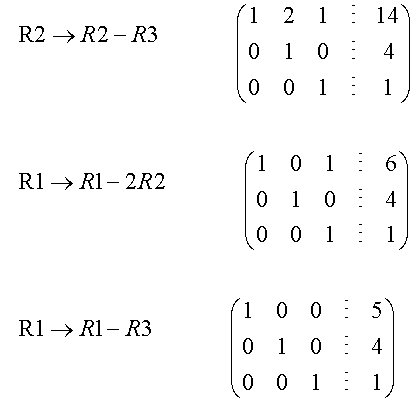
Solution
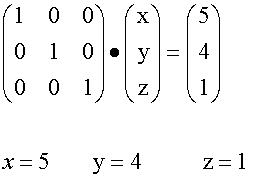
Example
Solve the system of equations
2x + y - 2z = 5
3x + 2y + 5z = 5
4x + 2y - 4z = 10

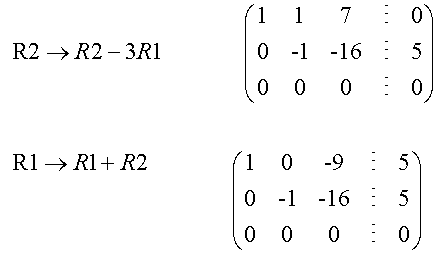

Click for a spreadsheet to calculate a 3x3 system
Gaussian elimination can be used to find the inverse of a matrix.
